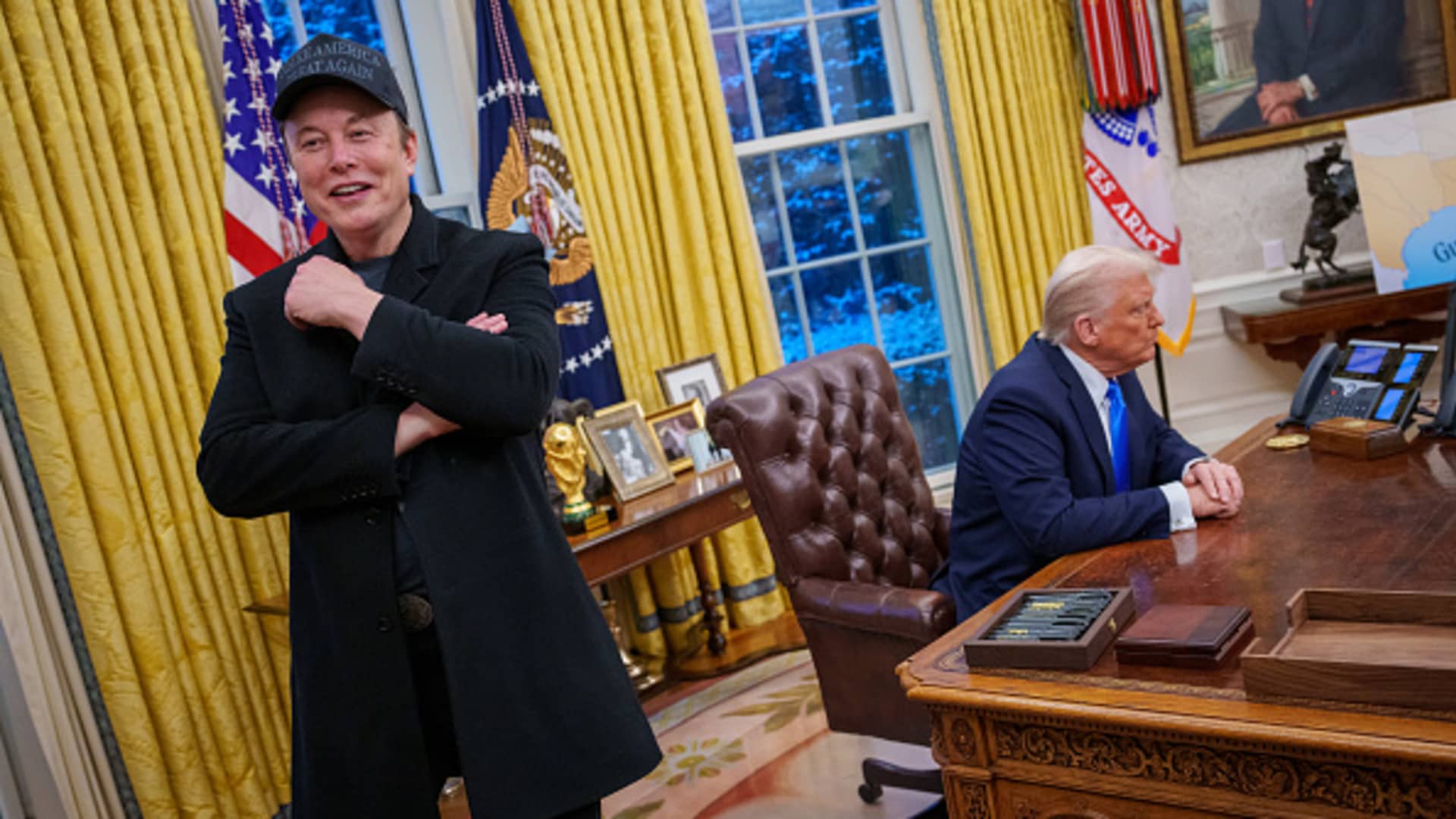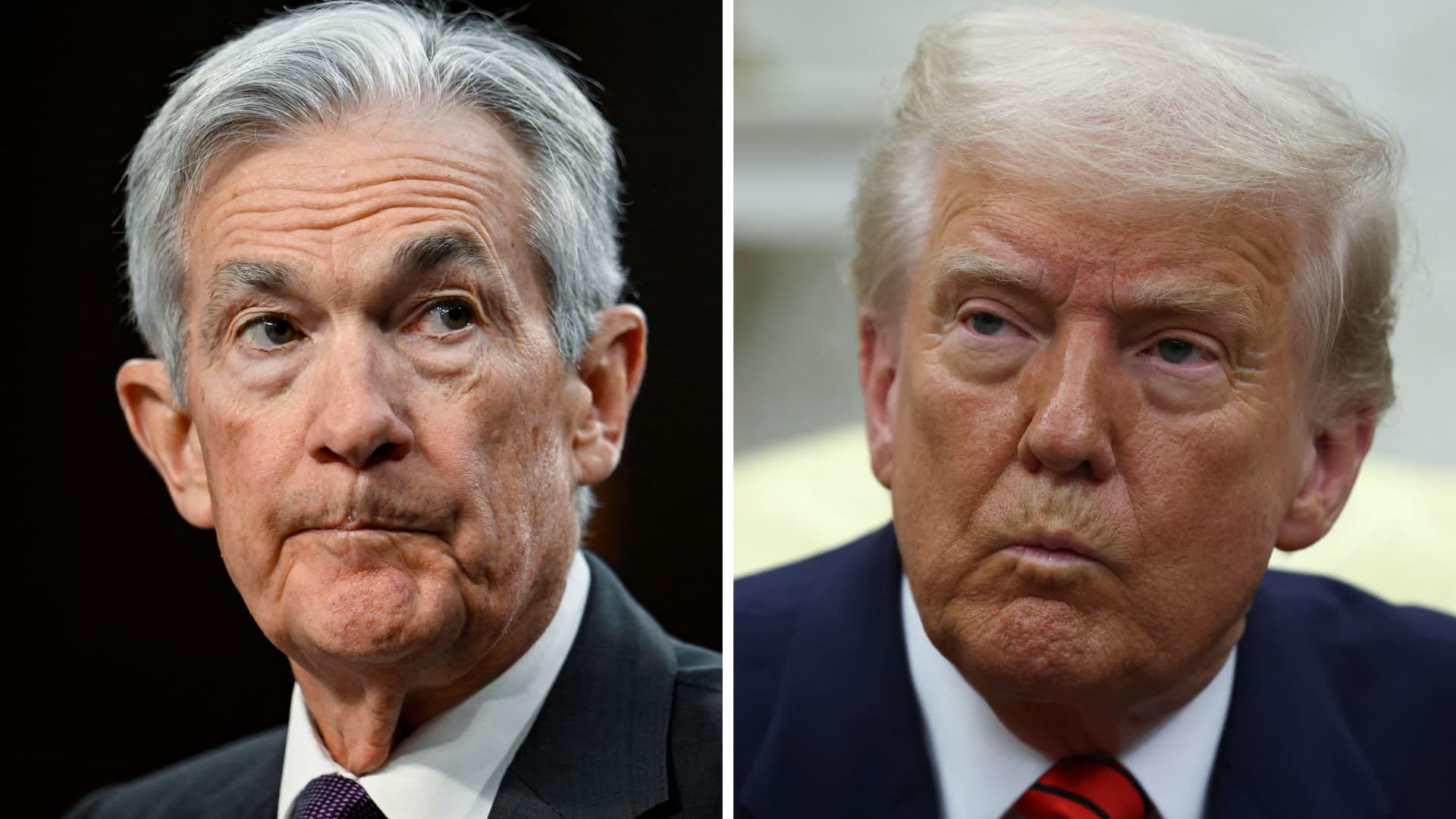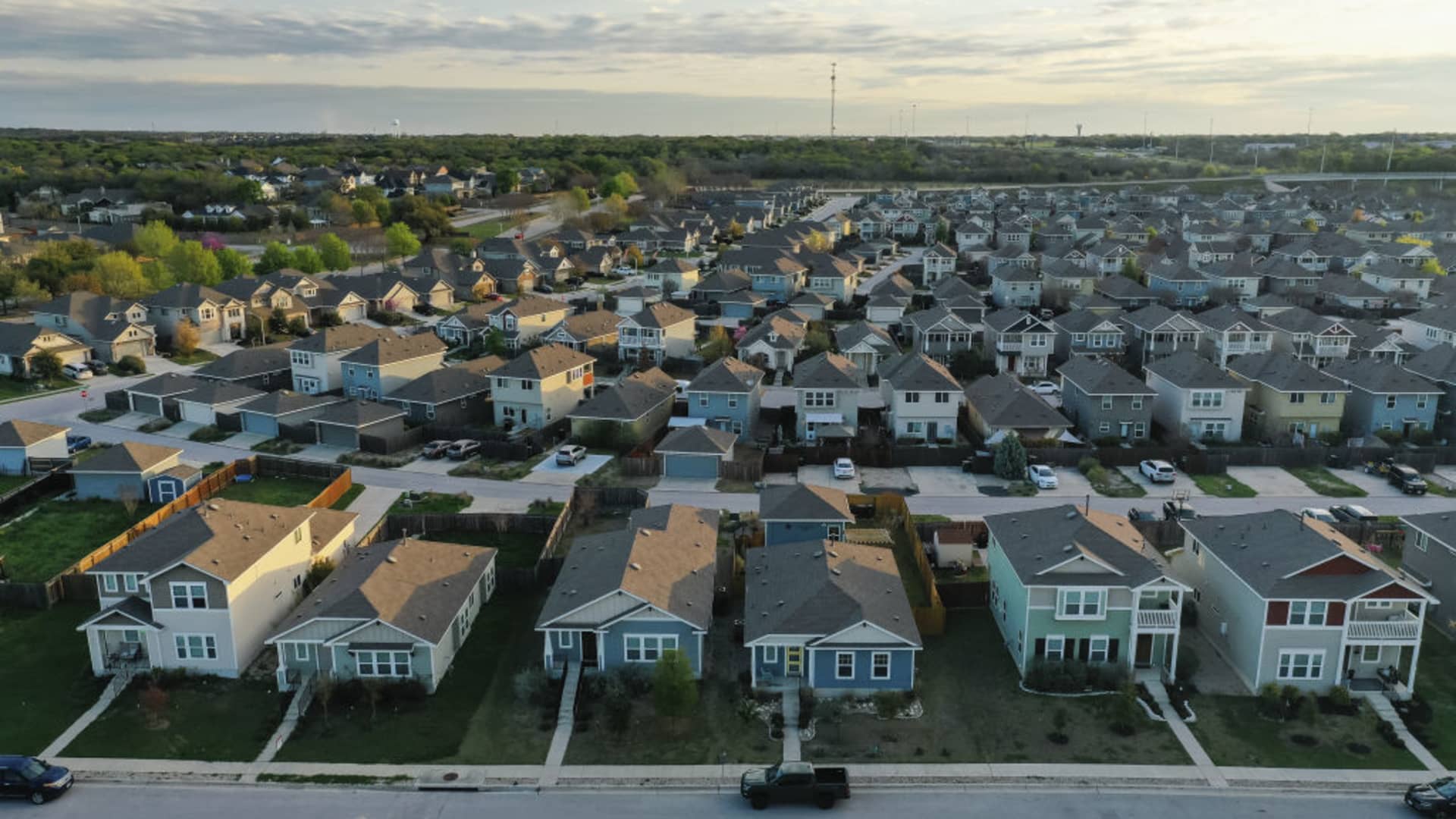Elon Musk and President Donald Trump in the Oval Office at the White House, Feb. 11, 2025.
Andrew Harnik | Getty Images News | Getty Images
As the so-called Department of Government Efficiency looks to cut federal spending, Elon Musk and President Donald Trump have floated the idea that some of any savings could come back to Americans in the form of $5,000 dividend checks.
But experts say it’s too soon to say whether such checks could materialize — and caution that if they did, there could be economic consequences for consumers.
How ‘DOGE dividend’ proposal came to be
Both Musk and Trump boosted a proposal that James Fishback, CEO of investment firm Azoria, posted Feb. 18 on social media platform X, that suggested sending millions of American households checks.
“Americans sent their hard-earned tax dollars to Washington, D.C.,” Fishback told CNBC.com. He said he believes some of “those tax dollars were wasted.”
“There needs to be restitution to correct that,” Fishback said.
The White House released in early February a list of what it called “waste and abuse” of funds at the U.S. Agency for International Development, including $1.5 million to promote diversity, equity and inclusion in Serbia’s workplaces and $70,000 for a DEI musical in Ireland.
Under Trump, DOGE, an advisory group, set an aim to cut $2 trillion in federal spending. However, Musk said in a recent interview that target may be the “best-case outcome” and there may be a “good shot” of cutting half that amount.
In his proposal, Fishback starts from the presumption that DOGE will achieve $2 trillion in cuts to the government. By taking 20% of that total savings — or around $400 billion — that may leave room for around 79 million tax-paying households to each receive a $5,000 tax refund, per Fishback’s plan.
More from Personal Finance:
How Trump, DOGE job cuts may affect the economy
What experts say borrowers should do amid risks to Education Dept.
Why Trump tariffs may raise your car insurance premiums
The idea of direct money may sound familiar to American households, millions of whom received Covid-era stimulus checks. But these payments would be different from the stimulus checks, which work to stimulate the economy at a time of weak gross domestic product growth, Fishback said. Unlike the stimulus checks, the DOGE dividend checks would be only for households that pay federal income taxes, Fishback said.
The idea calls for a dividend closer to something like the Alaska Permanent Fund, in that it would represent a share of collected savings, noted Maya MacGuineas, president of the bipartisan Committee for a Responsible Federal Budget.
The rebate would be sent only to households that are “net payers of federal income tax,” per the plan — people who pay more in taxes than they get back. Under those terms, lower-income Americans would not qualify for the return. According to the Pew Research Center, most Americans who have an adjusted gross income of under $40,000 effectively pay no federal income tax.
Fishback, meanwhile, told CNBC.com there’s no minimum income requirement, but Americans would have to file a federal tax return to receive the money. The prospect of the payments may provide an incentive for non-working individuals to re-enter the labor force, according to the plan.
To be sure, the terms of the plan could change if lawmakers decide to consider it.
Trump has welcomed the idea. Musk, who Trump brought on board to implement DOGE, “very much agrees the incentives are in place” to get everyday Americans to report waste, fraud and abuse, Fishback said of a recent conversation he had with the billionaire.
Congress would have to approve payments
Yet to send the DOGE checks out, the Trump administration will need Congress’ approval. Fishback has been meeting with House and Senate members to promote the idea.
Last week, House Speaker Mike Johnson, R-Louisiana, said that while it would be “great” politically, other priorities should come first. Experts say DOGE needs to figure out how much money has been saved before promising people checks in the mail.
“We have a $36 trillion federal debt. We have a giant deficit,” Johnson said. “I think we need to pay down the credit card.”
White House Deputy Chief of Staff Stephen Miller recently said the DOGE checks will be “worked on through the reconciliation process with Congress that’s going underway right now.”
Yet some experts have expressed doubts about the proposal.
“There’s no appropriation for this,” said Elaine Kamarck, a senior fellow at the Brookings Institution who ran the Clinton Administration’s National Performance Review, which implemented cuts in an effort to modernize and improve the federal government’s performance.
“You cannot spend money without Congress telling you that you can spend money,” Kamarck said. “That is illegal.”
It also remains to be seen whether the DOGE initiative can generate enough savings to justify $5,000 payments, Kamarck said. Even with the savings DOGE plans hope to generate, initiatives like curbing immigration will require new or increased spending in other areas.
Without yet having generated meaningful savings, it’s premature to talk about dividend checks, MacGuineas said.
“The bottom line is when you’re running $2 trillion deficits every year, you can’t give away more money in stimulus checks,” MacGuineas said.
“Basically, you’re borrowing more to give back to people, but the borrowing still falls on them,” MacGuineas said.
But if the DOGE were able to generate $1 trillion in savings per year, “absolutely additional savings being returned to taxpayers would make total sense and be desirable,” she said.
‘Wrong time’ to have consumer stimulus?
Inflation spiked in the aftermath of the Covid pandemic and is still higher than the Federal Reserve’s 2% target. Some experts worry that additional direct payments to Americans would contribute to more inflation.
“This is certainly the wrong time to have any sort of consumer stimulus,” said Judge Glock, director of research and senior fellow at the Manhattan Institute. “Inflation remains elevated; any sort of stimulus would exacerbate that inflation.”
However, the amount of money saved under DOGE may not provide payments big enough to fuel inflation, Kamarck said.
The prospect of direct payments comes as Congress may look at extending provisions in the Tax Cuts and Jobs Act later this year.
There are already a number of policies being added to that package that are raising deficit concerns, said Alex Muresianu, senior policy analyst at the Tax Foundation.
“This would be another very large thing to try and squeeze in as well,” he said.
Meanwhile, Fishback maintains the DOGE dividend checks would simply refund Americans money they already contributed through income taxes.
Moreover, the way Americans would likely use an unexpected $5,000 — by paying off debt, saving or investing toward long-term goals like retirement — would not be inflationary, Fishback said, citing a 2019 CNBC survey.
“Every American has the mechanism with DOGE and the incentive with the DOGE dividend to report this waste, fraud and abuse,” Fishback said. “We’ll save even more of our hard-earned tax dollars when we give every American skin in the game.”


 Economics7 days ago
Economics7 days ago
 Economics7 days ago
Economics7 days ago
 Economics5 days ago
Economics5 days ago
 Finance7 days ago
Finance7 days ago
 Economics7 days ago
Economics7 days ago
 Blog Post5 days ago
Blog Post5 days ago
 Personal Finance5 days ago
Personal Finance5 days ago
 Finance5 days ago
Finance5 days ago











